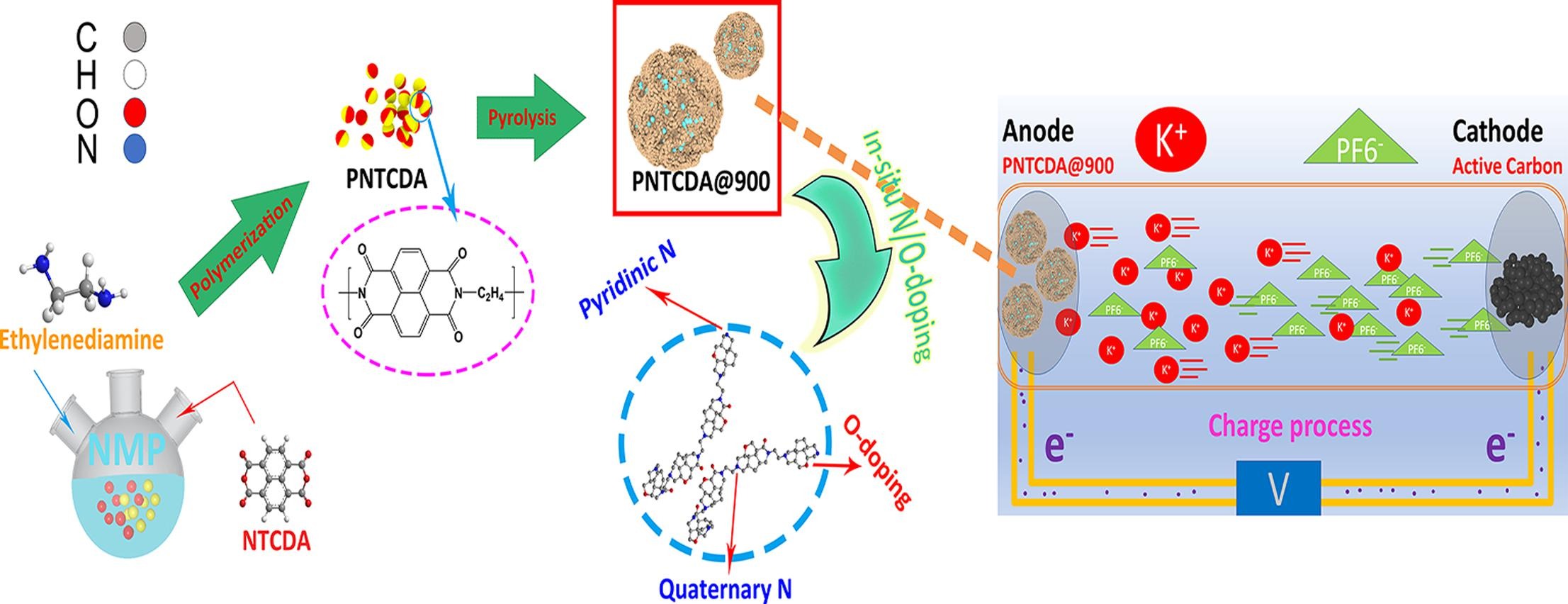Constructing volcanic -like mesoporous hard carbon with fast electrochemical kin
School of Physics and Telecommunication Engineering/NEWS 2021-02-22 11:14:34 From:School of Physics and Telecommunication Engineering Hits: Favorite
作者:Liu, Y (Liu, Yang)[ 1 ] ; Ru, Q (Ru, Qiang)[ 1 ] ; Gao, YQ (Gao, Yuqing)[ 1 ] ; An, QY (An, Qinyou)[ 2 ] ; Chen, FM (Chen, Fuming)[ 1 ] ; Shi, ZL (Shi, Zhenglu)[ 1 ] ; Zheng, MH (Zheng, Minhui)[ 1 ] ; Pan, ZK (Pan, Zikang)[ 1 ]
APPLIED SURFACE SCIENCE
卷:
文献号:
出版年:
文献类型:Article
KeyWords Plus:POROUS CARBON; ANODE MATERIAL; HIGH-POWER; GRAPHENE; FABRICATION; ELECTRODES; NANOSHEETS; TEMPLATE; STORAGE; SULFUR
【摘 要】Mesoporous hard carbon is synthesized by pyrolyzing N/O-rich polymer precursor. • Carbon anodes afford the excellent performance of potassium-ion batteries. • A promising performance of potassium-ion hybrid capacitor has been provided. • It shows the promotion of conductivities, active sites and capacitance effects. Potassium-ion batteries are considered as one of safe and low-cost alternatives to the traditional lithium-ion batteries. However, the sluggish potassium ion kinetics, drastic volume variation and inferior cyclic reversibility hinder the further development for the commercial applications. Herein, a new type of polyimide-inspired volcanic rock-like carbon is synthesized by pyrolyzing N/O-rich polymer precursor of polymeric 1, 4, 5, 8-Naphthalenetetracarboxylic dianhydride (PNTCDA). The synergetic effect of the mesoporous construction, the prominent capacitance and the ameliorated conductivity endows PNTCDA@900 with boosted potassium-ion electrochemical properties. As anodes for PIBs, the discharge capacity of 185.3 mAh g−1 can be achievable after 100 cycles at a current density of 0.05 A g−1, and the superior reversible capacity of 81 mAh g−1 is obtained even after 4000 cycles at a high current density of 2 A g−1. The cell can be operated in a reliable environmental adaptability with 115–205 mAh g−1 from −5 °C~70 °C at 0.1 A g−1. Furthermore, when applied to potassium-ion hybrid capacitors with active carbon as cathode, PNTCDA@900 delivers a reversible capacity of 53.5 mAh g−1 after 800 cycles at 2 A g−1. The current work will be significant for the development of potassium-ion storage.

